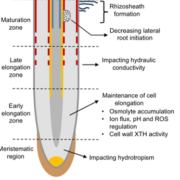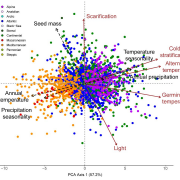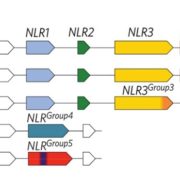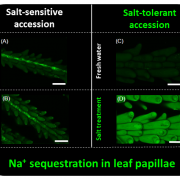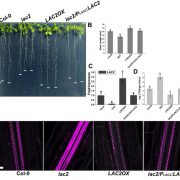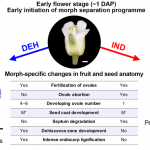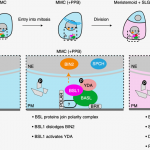A TOTally new pathway regulating thermomorphogenesis (Nature Comms)
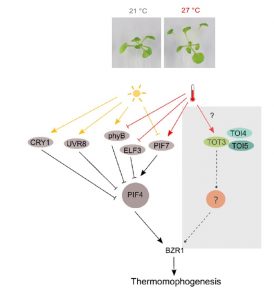 Increase in ambient temperature often causes remarkable changes in the shape and organization of plant body, including elongation of hypocotyl and petioles, early flowering, and reduction in stomatal index, collectively known as thermomorphogenesis. Virtually all the molecular pathways that are known to regulate thermomorphogenesis act through the light signaling factor PHYTOCHROME INTERACTING FACTOR4 (PIF4). PIF4 levels are in turn controlled by the photoreceptor Phytochrome B (phyB), which acts as a thermosensor. Overall, warm temperature signaling works in a highly intertwined manner with light signaling. In a new study, Vu et al. unveil the existence of a parallel pathway in temperature signaling that works independently from the conventional phyB-PIF4 pathway. Analyzing the changes induced by warm temperature in the phosphoproteomes of Arabidopsis, soybean and wheat, the authors identified a conserved membrane-localized MAP4 Kinase protein, which they named as TOT3 (TARGET OF TEMPERATURE 3). The loss of function of TOT3 in Arabidopsis and wheat hampered the ability to elongate the hypocotyl and leaf sheath, respectively, in response to warm temperature. Through an array of evidence, the authors vindicate the light signaling-independent action of TOT3. It works in association with other MAP4Ks through physical interaction and phosphorylation, and finally impinges on brassinosteroid signaling via BZR1 to promote thermomorphogenesis. Although further mechanistic details remain to be uncovered, this study clearly registers a novel molecular axis in temperature signaling. (Summary by Yadukrishnan Premachandran @yadukrishprem) Nature Comms. 10.1038/s41467-021-23112-0
Increase in ambient temperature often causes remarkable changes in the shape and organization of plant body, including elongation of hypocotyl and petioles, early flowering, and reduction in stomatal index, collectively known as thermomorphogenesis. Virtually all the molecular pathways that are known to regulate thermomorphogenesis act through the light signaling factor PHYTOCHROME INTERACTING FACTOR4 (PIF4). PIF4 levels are in turn controlled by the photoreceptor Phytochrome B (phyB), which acts as a thermosensor. Overall, warm temperature signaling works in a highly intertwined manner with light signaling. In a new study, Vu et al. unveil the existence of a parallel pathway in temperature signaling that works independently from the conventional phyB-PIF4 pathway. Analyzing the changes induced by warm temperature in the phosphoproteomes of Arabidopsis, soybean and wheat, the authors identified a conserved membrane-localized MAP4 Kinase protein, which they named as TOT3 (TARGET OF TEMPERATURE 3). The loss of function of TOT3 in Arabidopsis and wheat hampered the ability to elongate the hypocotyl and leaf sheath, respectively, in response to warm temperature. Through an array of evidence, the authors vindicate the light signaling-independent action of TOT3. It works in association with other MAP4Ks through physical interaction and phosphorylation, and finally impinges on brassinosteroid signaling via BZR1 to promote thermomorphogenesis. Although further mechanistic details remain to be uncovered, this study clearly registers a novel molecular axis in temperature signaling. (Summary by Yadukrishnan Premachandran @yadukrishprem) Nature Comms. 10.1038/s41467-021-23112-0


